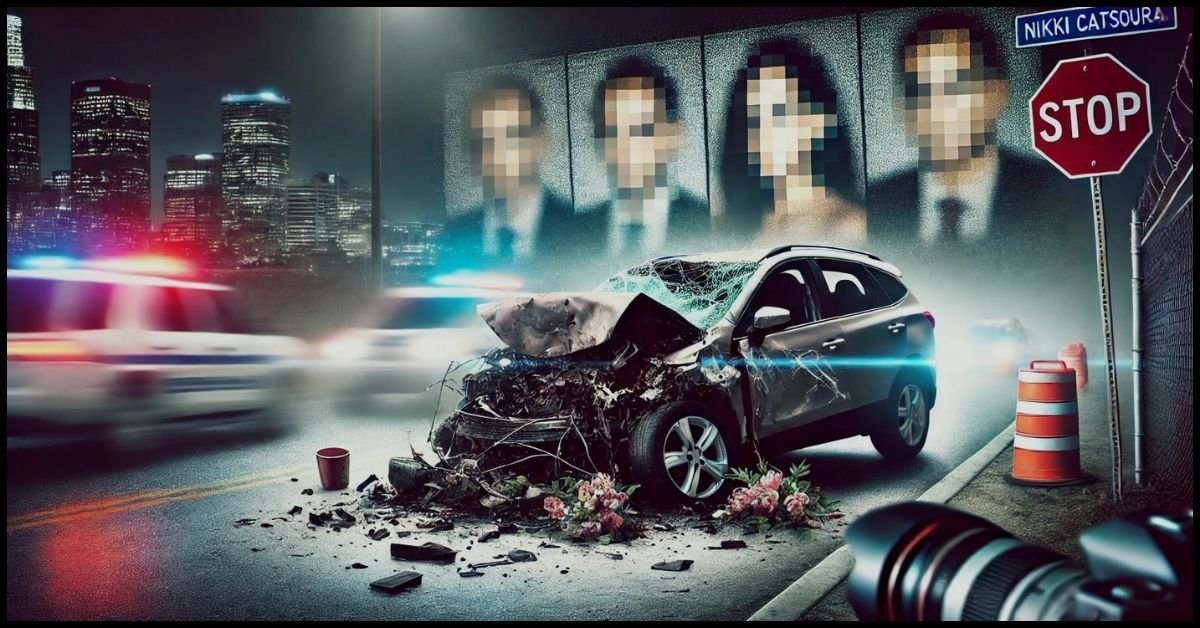The story of Nikki Catsourasis is a heart-wrenching tragedy that took a dark turn when graphic photos of her fatal car crash were leaked online, sparking outrage and raising critical questions about privacy, ethics, and the responsibilities of law enforcement and the media in the digital age.
The Nikki Catsouras crash photos controversy highlights the devastating emotional impact on the family, the ensuing legal battles, and the broader societal issues concerning disseminating sensitive content online. This article takes a deep dive into the tragic incident, the unethical sharing of the crash photos, and the far-reaching consequences of this controversy.
Who Was Nikki Catsouras?
Nikki Catsouras was an 18-year-old college student from Ladera Ranch, California. She came from a loving family and was known for her outgoing personality. Tragically, her life was cut short on October 31, 2006, when she died in a horrific car accident.
That day, Nikki took her father’s Porsche 911 Carrera without permission and lost control of the car while driving at high speed. Her vehicle collided with a toll booth on the 241 Toll Road in Lake Forest, California, leading to a devastating crash. The impact was so severe that she died instantly, and the collision left her body and the car in a gruesome state.
The Crash and Its Aftermath
While the death of Nikki Catsouras was already a heartbreaking event for her family, what followed made the tragedy exponentially worse. In the immediate aftermath of the crash, police officers from the California Highway Patrol (CHP) arrived to conduct the necessary investigations. During this process, graphic photographs of the crash site, including images of Nikki’s body, were taken as part of the standard procedure for documenting fatal accidents.
However, these photographs, meant solely for investigative purposes, were later leaked by CHP officers, which would soon result in a massive violation of the family’s privacy and dignity.
The Leak of the Crash Photos
Two CHP officers were responsible for leaking the graphic crash photos of Nikki Catsouras. These images, showing the gruesome details of the accident and the condition of Nikki’s body, soon found their way to various websites, blogs, and forums. Once the photos were uploaded, they spread rapidly across the internet, leading to widespread public exposure.
For Nikki’s family, the emotional toll was unbearable. They not only had to grieve the loss of their daughter but were also subjected to a horrifying and relentless online assault as the photos circulated widely. In some cases, internet trolls even sent the photos directly to the family members, sometimes with cruel captions and messages.
The Emotional Impact on the Catsouras Family
The emotional impact of the leaked photos on the Catsouras family was profound. The violation of their privacy and the constant exposure to the horrifying images of their daughter’s death caused immense psychological pain.
Cyberbullying and Harassment
The internet can be a cruel place, and the Catsouras family became the target of online harassment and cyberbullying. People sent the crash photos directly to family members, often in the form of anonymous emails and text messages. The emotional trauma that this caused was unimaginable. Nikki’s parents, Lesli and Christos Catsouras spoke publicly about the psychological toll this took on the entire family, especially as they struggled to move forward after losing Nikki.
Attempts to Stop the Spread
The Catsouras family took significant legal action to have the photos removed from the internet. However, once something is shared online, it can be nearly impossible to erase. Despite their efforts, copies of the images surfaced on various platforms, leading to ongoing distress.
Legal Battles and Accountability
The Catsouras family decided to pursue legal action against the California Highway Patrol, explicitly targeting the two officers responsible for leaking the photos. They filed a lawsuit on the grounds of negligence, invasion of privacy, and emotional distress.
Legal Challenges
One of the significant legal challenges in the case was determining liability for the unauthorized release of the photographs. The CHP argued that they were not directly responsible for the viral spread of the photos, although they acknowledged the officers’ inappropriate actions.
In 2009, an Orange County judge ruled that the family could not pursue damages for emotional distress, citing an old legal doctrine that limited liability for third-party harm. However, the Catsouras family appealed the ruling, and in 2010, the California Court of Appeal overturned the earlier decision, allowing the family to proceed with their lawsuit.
Settlement
In 2012, the Catsouras family settled with the California Highway Patrol. The CHP agreed to pay the family nearly $2.37 million in damages. While the financial Settlement provided some sense of accountability, it did little to erase the emotional scars left by the widespread circulation of the graphic photos.
Privacy, Ethics, and the Internet: A Broader Issue
The Nikki Catsouras crash photos controversy brings to light several broader issues that have become increasingly relevant in the age of digital communication, including law enforcement’s ethical responsibility, social media’s role, and the protection of personal privacy.
The Role of Law Enforcement
The actions of the CHP officers raised critical questions about the professionalism and ethical standards within law enforcement. While the photos were taken as part of routine procedures, the decision to leak them demonstrated a gross violation of privacy and protocol. This case has prompted discussions about the need for stricter policies and training to prevent such breaches in the future.
The Internet and the Lack of Accountability
Once the photos of Nikki’s crash were leaked, they spread rapidly across the internet, showcasing the difficulty of controlling information once it’s shared. Social media platforms, blogs, and forums became vehicles for circling this sensitive material, highlighting the ethical dilemmas surrounding sharing graphic content online.
The internet’s anonymity also allowed individuals to engage in harmful behavior, sending the images directly to the Catsouras family in cruel acts of harassment. This reflects a broader issue about how online culture often lacks accountability and empathy, especially regarding sensitive matters involving real people and their suffering.
The Right to Privacy in the Digital Age
This case underscores the importance of safeguarding the right to privacy, especially in an era where personal and sensitive information can be easily shared. The Catsouras case has become an example of the need for better regulations and protections to prevent such invasions of privacy, not only for families of accident victims but for all individuals whose personal tragedies could be exploited online.
FAQs: Nikki Catsouras Crash Photos Controversy
Q1: What caused the Nikki Catsouras car crash?
A: Nikki Catsouras lost control of her father’s Porsche 911 Carrera while speeding, leading to a fatal collision with a toll booth on the 241 Toll Road in Lake Forest, California.
Q2: Why were the crash photos leaked?
A: The photos were taken by CHP officers as part of the investigation but were inappropriately leaked by two officers, leading to widespread online circulation.
Q3: How did the Catsouras family respond to the photo leak?
A: The Catsouras family pursued legal action against the California Highway Patrol, resulting in a settlement for emotional distress and privacy violations.
Q4: What was the legal outcome of the case?
A: In 2012, the Catsouras family reached a settlement of $2.37 million with the California Highway Patrol.
Q5: Can the photos still be found online?
A: Unfortunately, despite efforts to remove the photos from the internet, they continue to surface due to the nature of online content sharing.
Q6: What impact did this controversy have on privacy laws?
A: The case highlighted the need for stricter privacy protections and accountability for disseminating sensitive information, especially in the digital age.
Conclusion
The Nikki Catsouras, crash photos controversy, is a tragic and cautionary tale about the dangers of unethical behavior in the digital age. While the incident began as a devastating car accident, the subsequent leak of graphic photos amplified the emotional suffering of the Catsouras family, showcasing the far-reaching consequences of privacy violations.
This case emphasizes the need for stricter regulations to protect personal privacy, increased accountability for those who misuse sensitive information, and a collective effort to promote empathy and responsible behavior online. The legacy of Nikki Catsouras’ story serves as a reminder that tragedies deserve respect, not exploitation.





